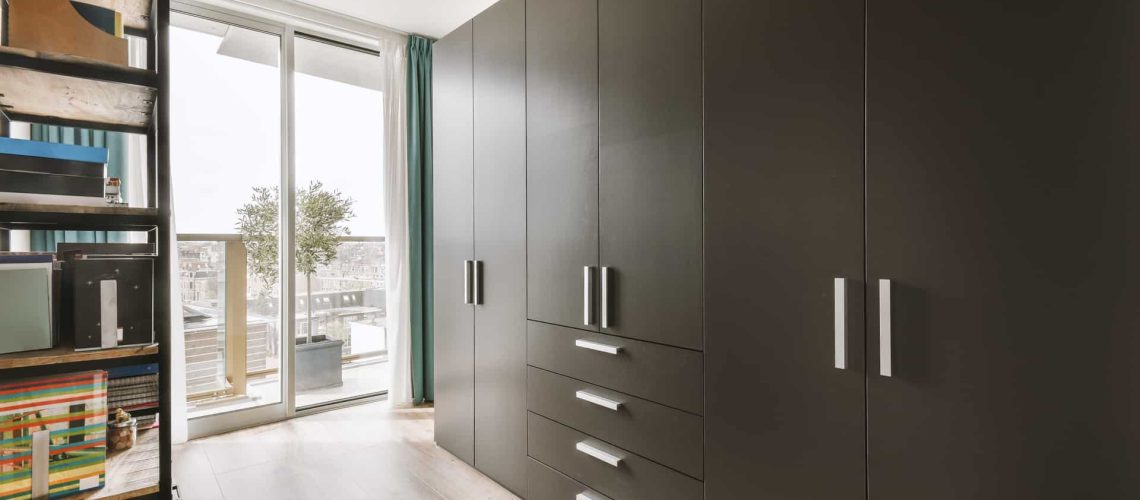Sharing a closet space with a partner can be a challenge, especially if both individuals have different styles and organizational habits. However, with some thoughtful planning and design, it is possible to create a harmonious and functional space that meets the needs of both individuals. A well-designed closet can not only help prevent clutter and confusion but also promote a sense of unity and cooperation within the relationship.

1- Divide the space:
One of the key strategies for successfully sharing a closet space with a partner is to divide the space into designated zones for each person’s clothing and accessories. This helps prevent mixing and mingling of items, making it easier to find what you need when getting dressed in the morning. Consider allocating specific areas for hanging clothes, folded items, shoes, and accessories. By clearly defining each person’s space, you can minimize conflicts and ensure that both individuals have enough room for their belongings.
2- Incorporate dual hanging rods:
To maximize hanging space and keep clothing separate and organized, consider installing dual hanging rods in the closet. This allows each person to have their own section for hanging clothes, making it easier to keep items sorted by type or color. By utilizing vertical space effectively, you can make the most of a small closet and ensure that both individuals have enough room for their clothing. Additionally, consider using slimline hangers to maximize hanging space and keep clothes from slipping off.
3- Utilize storage solutions for shared items:
In addition to individual clothing and accessories, couples often have shared items that need to be stored in the closet. To keep these items organized and easily accessible, consider using bins, baskets, or shelves for storing linens, towels, or seasonal gear. By designating specific areas for shared items, you can prevent clutter and make it easier to find what you need when you need it. Consider using clear containers or labels to help keep track of what is stored where.
4- Create a compromise on design:
When it comes to designing a shared closet space, it is important to find a design style that both individuals can agree on. Consider discussing preferences and priorities with your partner to come up with a design that reflects both of your tastes. Whether you prefer a minimalist aesthetic or a more traditional look, finding a compromise on design can help create a space that feels cohesive and inviting. Consider incorporating elements that reflect both of your personalities, such as favorite colors, textures, or patterns.
In conclusion, sharing a closet space with a partner can be a rewarding experience with the right design and organization. It is important for couples to approach the process of designing a shared closet with open communication, compromise, and a focus on functionality. By implementing some key tips and strategies, couples can create a closet space that meets both of their needs and promotes harmony within the relationship.
One of the most important aspects of designing a shared closet space is to divide the space effectively. By assigning specific areas or sections to each partner, it becomes easier to keep belongings organized and separate. This can help to prevent any potential conflicts over space and ensure that each partner has their own designated area for their items.
In addition to dividing the space, incorporating dual hanging rods can also be a great way to maximize storage and make the most of the available space. By having two levels of hanging rods, couples can easily hang their clothing in an organized manner and make use of vertical space in the closet. This can help to prevent overcrowding and ensure that both partners have enough room for their clothing.
Utilizing storage solutions for shared items is another key aspect of designing a shared closet space. By investing in storage bins, baskets, shelves, and other organizational tools, couples can keep shared items such as shoes, accessories, and seasonal clothing neatly stored and easily accessible. This can help to prevent clutter and make it easier to find and access items when needed.
Finding a compromise on design is also essential when designing a shared closet space. It is important for couples to discuss their individual preferences and come to a mutual agreement on the overall design and aesthetic of the closet. By finding a design that both partners are happy with, it can help to create a space that reflects both of their personalities and promotes a sense of unity within the relationship.
Overall, with a little creativity and communication, it is possible to create a functional and stylish closet that works for both individuals. By following these tips and strategies, couples can design a shared closet space that meets their needs, promotes harmony within the relationship, and makes getting dressed in the morning a more enjoyable experience. Sharing a closet space with a partner may have its challenges, but with the right approach and mindset, it can also be a rewarding and fulfilling experience.















